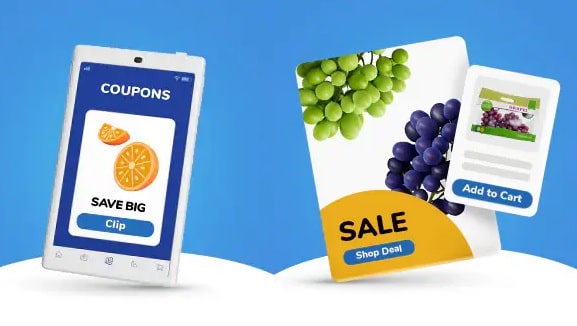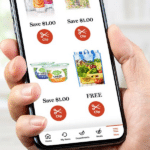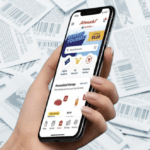
Coupon use hasn’t bounced back to pre-pandemic levels yet. But it’s getting closer.
In another sign that savings are back in style after coupon redemption hit bottom a couple of years ago, new figures show that couponing is on the upswing so far this year, as shoppers turn to tried and true ways to reduce their rising grocery bills.
That’s according to Inmar Intelligence and its Mid-Year Promotion Trends & Shopper Insights report. It found that 445 million coupons were used in the first half of 2024. That’s up 9% from the same time last year, and up 14% from the historic low set in 2022. Before then, coupon use had been declining year after year for more than a decade, so the past couple of years represent a welcome turnaround.
It’s especially notable, considering the number of coupons that are available to use continues to plummet. So far this year, only 39 billion coupons have been issued, a third less than the same time last year, and half as many as were available just two years ago.
The good news and the bad news is that the distribution decline is almost entirely attributable to the dearth of newspaper insert coupons. Fewer brands are offering coupons in the printed Sunday newspaper inserts, as fewer Americans receive a printed Sunday newspaper. A single offer running in a single insert could represent tens of millions of individual coupons – most of which will never be used, but they’re out there. A single brand deciding to no longer offer coupons in the Sunday inserts could subtract hundreds of millions of coupons a year from the distribution total. Take a few more brands out of a year’s worth of inserts, and that distribution figure goes down fast.
In something of a statistical experiment, Inmar calculated total coupon distribution without insert coupons in the mix, and found that distribution of all other forms of coupons has actually been rising year-over-year.
So there may be fewer coupons in total, but those that are available are in formats that shoppers these days are more likely to use.
Digital coupons now represent 54% of all coupons redeemed so far this year, with the once-dominant insert coupons now making up a mere 3.5% of all coupons used. Of course, you could just as easily argue that there are fewer insert coupons available because shoppers don’t want them, as you could make the case that shoppers aren’t using insert coupons because there are so few of them. It’s hard to use something that isn’t there, but the flip side of the chicken-or-the-egg argument is that it’s pointless to issue coupons that few people will ever use.
A clue about shoppers’ true preferences could be gleaned from the fact that 46% of coupons redeemed so far this year are not digital. That includes checkout coupons, tearpads, on-pack coupons, handout coupons, consumer relations coupons, and so on – all of them printed on good old-fashioned paper. If more paper coupons were to show up in your mailbox or on your front porch each Sunday, it’s likely you’d use more of them.
In fact, Inmar found that more than half of shoppers in all age groups who use coupons, still use paper coupons. There is a preference for digital, especially among younger shoppers, with about three-quarters of Gen Z and millennials saying they’ve used a digital coupon this year – but 60% of those same young shoppers have used paper coupons, too.
For most shoppers, then, it’s not so much about how they save – but how much they can save. Citing FMI data, Inmar points out that the average American is paying $50 more per week for groceries than they were in pre-pandemic 2019. For shoppers who hadn’t thought much about using coupons before, coupons sure look good now.
An Inmar survey found that 72% of shoppers have increased their use of coupons, and plan to continue doing so even if prices stabilize. 43% seek out the best sales and coupon deals by shopping at multiple grocery stores in a week. And 29% base their entire shopping list around the coupons they have clipped.
After several years of rising prices and reduced promotions, when shoppers often had little choice but to pay full price, the pendulum is beginning to swing toward a search for savings again. And shoppers don’t want to go it alone – nearly half of all survey respondents told Inmar they think retailers and manufacturers need to improve how they help shoppers save money, whether it’s in the form of more coupons, more relevant coupons, more personalized offers, or more overall bang for their buck. And when the shopper wins with greater grocery savings, the retailers and brands that help them save are likely to emerge the winners as well.
Image source: Kroger











More usage but companies still are not getting out the coupons like before. Pn&G and their .50 cent coupons.. we havent seen any of their 2.00 coupons in ages.. no gain…. hoping everyone stops buying it.. Companies are still making record profits even tho sizes are smaller to us.